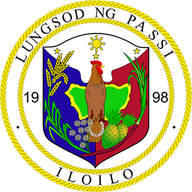
Although Passi is a young city, it is one of the Iloilo’s oldest settlements, originally settled by three Malayan Brothers: Dig-on, Toklab and Omawang. So far, recorded data of Passi’s past began with the arrival of Spabusg conquistadores. Differences in languages were allegedly the reason how places got their names. How Passi got its name was told by tradition.
During the early days in Panay, a group of Spanish conquistadores under Legaspi managed to find their way into the mouth of what is known as Jalaur River at Talaguis near Barotac Nuevo on a mission of exploring Hinterlands of Iloilo. They rode on a unique flatboat known as “sciata” that could float more easily on any kind of up and downstream travel. That trip took them as far as sitio of Calinog, northwest of Passi.
One day, a bunch of these Spanish explorers travelled downstream. They anchored on a place further west at the mouth of Lamunan River called “Ansig”. They stumbled on a small hut by the river bank where an old woman was found winnowing pounded palay. One of them using their own language asked her, “Como se llama este lugar?” Much to the old woman’s surprise and perhaps excitement, she replied without much ado, “pasi” which means unhusked rice in her both hands from the basket she was holding. Because she could not understand their language, she must have thought that they were eager to know what was in the basket and what as she doing. From that time, the Spaniards began first to call the place, “Pasi”. Then later, the word evolved to be known by its present “Passi”.

